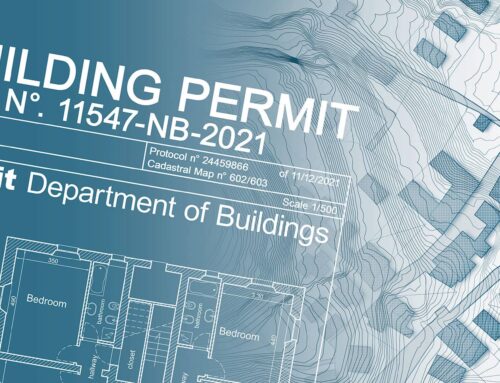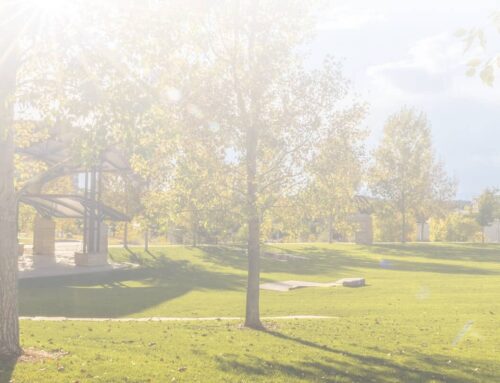Unlocking the Benefits of ADUs: What Is An ADU In Real Estate?
An ADU might be the perfect addition if you’re looking for ways to maximize your property’s potential. But what exactly is an ADU in real estate? An Accessory Dwelling Unit (ADU) is a secondary housing unit that can be added to a residential lot. These units can be attached or detached from the primary residence and are designed to provide separate living quarters for family members, guests, or tenants.
ADUs have become increasingly popular in recent years as more homeowners look for ways to increase their property value and generate additional income. They offer a flexible housing solution that can accommodate different lifestyles and living arrangements. Whether you need extra space for aging parents or want to rent out the unit for extra income, an ADU can provide many benefits. In this article, we’ll explore everything you need to know about ADUs in real estate, including building regulations, design options, investment potential, and more.
Key Takeaways
- ADU stands for Accessory Dwelling Unit and is a secondary housing unit that can be added to a residential lot.
- ADUs offer a flexible housing solution that can accommodate different lifestyles and living arrangements, and can provide additional income, increased property value, and separate living space for family members.
- Building regulations for ADUs vary by state and city and failure to comply could result in fines or legal action.
- Designing an ADU involves maximizing functionality and comfort in a smaller space, providing adequate natural light and ventilation, distinct areas for different activities, and ample storage options.
Types of ADUs
You’ll be surprised at the variety of ADUs available in real estate. From cozy backyard cottages to sleek garage conversions, there are different types of accessory dwelling units that can fit your preferences and needs. In Denver, for instance, there are various options you can explore depending on your zoning and location.
One type of ADU is a detached unit that sits separately from the main house. This type may require more space and privacy but can provide an independent living option for occupants. Another option is an attached unit that’s connected to the primary dwelling, such as a converted basement or attic apartment. Attached ADUs usually share some utilities with the main house but may have their own entrance.
In Denver, you can convert a garage into an ADU provided it meets certain requirements outlined in the Denver ADU Zoning Map. These include having adequate parking space outside the converted structure and following specific building codes for safety and habitability purposes. Before converting your garage into an ADU, make sure to check with local authorities regarding any permits or approvals needed to avoid penalties later on.
Building Regulations
Building regulations can dictate the size, placement, and design of additional structures on a property. In regards to ADUs, there are specific regulations that vary by state and even city. These regulations often include minimum lot sizes, setback requirements from property lines or other buildings, and maximum square footage for the structure.
For example, in California, new ADUs must not exceed 1,200 square feet for an attached unit or 1,000 square feet for a detached unit. Additionally, there are restrictions on how close the ADU can be to other structures on the property and how many parking spaces must be provided. Failure to comply with these regulations could result in fines or even legal action.
It is important to consult with local building officials before beginning any construction on an ADU. They will be able to provide specific information about what is allowed in your area as well as any necessary permits or inspections required throughout the building process. By following these regulations and working with professionals who understand them, you can ensure that your ADU is built safely and legally.
Benefits for Homeowners
If you’re looking to add extra space for a home office or guest room, there are plenty of benefits to building an accessory dwelling unit on your property. One of the main advantages is that it can provide additional income by renting out the space. This can be especially helpful for homeowners who need some extra cash flow, but don’t want to leave their current home. Additionally, having an ADU on your property can increase the overall value of your home and make it more attractive to potential buyers if you decide to sell in the future.
Another benefit of having an ADU is that it provides a separate living space for family members, such as aging parents or adult children who need their own space. It’s a great way to keep everyone close while still maintaining privacy and independence. You could also use the space as a vacation rental or Airbnb, which could bring in even more income.
Building an ADU can be environmentally friendly by reducing carbon emissions and promoting sustainable living. Smaller living spaces require less energy consumption than larger homes, so having an ADU on your property can help reduce your carbon footprint. Additionally, using green materials and implementing energy efficient features can further decrease environmental impact and save money on utilities in the long run. Overall, adding an ADU to your property has many benefits that make it a worthwhile investment for any homeowner seeking additional space or income opportunities.
Investment Potential
Investing in an accessory dwelling unit can generate a significant return on your investment. ADUs are becoming increasingly popular because of their versatility, affordability, and ability to create affordable housing. If you have space on your property and want to make some extra income, building an ADU could be a great option.
One of the biggest benefits of investing in an ADU is that it can provide you with a steady stream of rental income. By renting out the additional unit, you can earn passive income while also increasing the value of your property. This is especially true if you live in a high-demand area with a shortage of affordable housing options, like Aurora, CO.
Another advantage of investing in an ADU is that it provides flexibility for homeowners needing additional living space for family members or guests. Whether you’re looking to accommodate aging parents or provide independent living space for adult children, an ADU offers a convenient solution without compromising privacy or autonomy. Additionally, if you ever decide to sell your home, having an ADU as part of the package could increase its appeal and value to potential buyers.
Overall, investing in an accessory dwelling unit offers numerous advantages for homeowners looking to increase their income and property value while providing flexible living arrangements for themselves and their loved ones.
Design and Layout
When designing your accessory dwelling unit (ADU), you can create a cozy space that maximizes functionality and comfort for both you and your guests. Keep in mind that ADUs are typically smaller than traditional single-family homes, so it’s important to utilize every inch of space wisely. Consider using multi-functional furniture, such as a sofa bed or a table with built-in storage.
Another key aspect in designing an ADU is to ensure it has adequate natural light and ventilation. This not only creates a more inviting atmosphere but also helps reduce energy costs. You can achieve this by incorporating large windows, skylights, or even glass doors that lead out to an outdoor living area. In addition, consider adding ceiling fans or other forms of air circulation to keep the space comfortable year-round.
Create distinct areas within the ADU for different activities such as sleeping, cooking, and lounging. Use furniture placement and room dividers to separate these spaces while still maintaining an open feel visually. Also, be sure to provide ample storage options such as built-in shelving or closet space so everything can be neatly organized and easily accessible. With careful planning and creative solutions, you can design an ADU that meets all your needs while maximizing its potential as a valuable investment property.
Permitting Process
Navigating the permitting process can be overwhelming for homeowners looking to add an ADU, but understanding the requirements and timelines is crucial to ensure a smooth project. The permitting process involves obtaining all necessary permits and approvals from local government agencies before construction can begin on your ADU. You will need to submit plans and specifications of your proposed ADU, along with payment of fees, to the appropriate department in your local government.
The timeline for obtaining permits varies depending on location and complexity of your project. It’s important to do research about the requirements in your area and plan accordingly. Some cities have expedited permit processes specifically for ADUs, which can significantly reduce wait times. However, it’s still important to allow ample time for any required inspections or revisions before beginning construction.
While it may seem daunting at first, navigating the permitting process is an essential step in adding an ADU to your property. By doing your research ahead of time and being prepared with all necessary documentation and payments, you can help ensure a smoother approval process. Remember that local government agencies are there to help guide you through this process and answer any questions you may have along the way.
ADU vs. Tiny Home
If you’re considering adding more living space to your property, have you thought about the differences between an ADU and a tiny home? While both options can provide extra living space, they are quite different in terms of size, cost, and building codes.
An ADU is a secondary dwelling unit that is attached or detached from the main house. It has its own entrance, kitchen, bathroom, and sleeping area. An ADU typically ranges from 300-1200 square feet and can be used for rental income or as additional living space for family members. In most cities, an ADU must meet certain building codes and zoning regulations before it can be built.
On the other hand, a tiny home is typically smaller than an ADU and built on wheels for mobility. They are often used as affordable housing options or as vacation homes. Depending on the design, tiny homes can range anywhere from 80-500 square feet. However, they may not require permits or adhere to zoning laws in some areas because they are not considered permanent structures.
Ultimately, whether you choose to build an ADU or a tiny home will depend on your specific needs and budget constraints. If you’re looking for a more permanent structure that meets all building codes and regulations while providing additional living space or rental income potential – then an ADU might be the best option for you. Conversely, if portability and affordability are important factors – then a tiny home could be the perfect solution to your need for more livable space.







